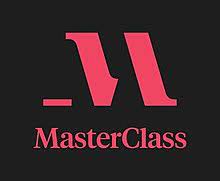Are public schools and charter schools equivalent? Exactly what are charter schools?
Selecting the right school for your child to attend is one of the most crucial decisions you will make as a parent.
There are many things to take into account when making this choice, including the standard of the classroom, the credentials and reliability of the teachers, extracurricular activities, classrooms, community outreach initiatives, and inclusion and diversity.
But some parents continue to wonder about the distinctions between public and charter schools, whether one is superior to the other, and how picking one over the other might enhance or impair their child’s learning experience.
Here in this article, we will have a look at some insights on charter schools vs public schools. Let’s understand the actual difference between both of them.
Charter Schools VS Public Schools: In a Nutshell
Here is a quick comparison between charter schools and public schools.
| Charter Schools | Public Schools | |
| Costs | Less or nno tution fees | Less or no tuition fees |
| Funding | Funded on a per-student basis with government funds | Government funds |
| Government Regulation | Independent | Follows Government Regulations |
| Teacher Certification | Differs from state to state | Must be state-certified or working toward it. |
Overview: Charter Schools Vs Public Schools
Let’s begin with a short overview of charter schools and public schools.

Charter Schools
In essence, charter schools are independent, separate schools that a group of people decides to establish on their own.
They must still uphold a certain level of quality, though, and they are still held accountable.
Most of them are public institutions with no tuition. They typically diverge significantly from conventional public schools.
With specific agreements with state or local governments that impose rules and performance standards, charter schools operate independently.
They are not subject to the rules and regulations of the school district, even though they operate under a written agreement with a district, state, or sponsor.
Funding for charter schools is given on a fixed and per-pupil basis, and they are also in charge of regulating such funds.
They have developed their own teaching approach and syllabus. The state board of education or other educational organisations that serve as authorises are accountable for the performance of charter schools.
Public Schools
Usually, the state or federal governments are responsible for funding public education. From kindergarten through grade 12, they provide opportunities for general education as well as a variety of extracurricular activities.
They must adhere to state and federal laws even though they are developed at the district level.
Public school students study not only the fundamentals but also fine arts, social studies, science, and technology. They also participate in physical education.
The secondary level is where public schools continue. Additionally, students have the option to select some of the courses, which could include advanced math and science courses as well as a variety of foreign languages.

They also provide their students with a variety of extracurricular opportunities that help them develop their skills in a variety of areas, including speech, drama, sports, and music.
Public schools don’t have the option or flexibility to run independently, in contrast to charter schools. The state education board’s set educational standards must be followed by them.
Admission Process: Charter Schools Vs Public Schools
Public and charter schools never discriminate against students who are accepted. The admission, however, continues to vary between the two of them.
For admission to charter schools, students must apply. Additionally, charter schools filled their enrollment gap by holding a random lottery.
If a student is not selected in the lottery, they will not be admitted. Even those pupils who don’t achieve the attendance standard are denied.
When it comes to public schools, they are open to all students who reside in the neighbourhood school district. You don’t need to apply for admission to public schools.
Regulation: Charter Schools Vs Public Schools
Charter schools are not strictly regulated because they are not governed by a single entity. They are autonomous and are required to adhere to the rules outlined in their charter.
By meeting these requirements, they receive funding. Public schools and charter schools must follow the same regulations regarding nondiscrimination, health and safety, and the length of the school year.
However, beyond that, charter schools run independently under agreements with the institutions that grant each of their unique charters.
Authorised charters specify clear educational goals but may be different from those required by various state or federal governments.
For instance, charter schools may decide to limit hiring to certified candidates, while public schools are only permitted to employ teachers who are certified.
In addition to having less oversight from the government, charter schools are not subject to the same transparency standards.
While charter schools are exempt from the Freedom of Information Act, public schools are subject to public scrutiny of their finances.
This enables managers and leaders of charter schools to consult one another in private and take independent decisions.
In reality, the boards or private individuals who own and run charter schools can be based elsewhere and appoint a different organisation to run the school.
Public schools lack this autonomy and are accountable to the general public. They cannot hold private meetings; all business of the elected school boards must be conducted in public.
Curriculum: Charter Schools Vs Public Schools
Charter schools have a super versatile curriculum that allows them to adapt their course content to a student’s needs. They are exempt from a number of local, state, and federal laws that control public schools, which gives them this freedom.
Charter schools are flexible, but they don’t offer a lot of electives. Because they are electives in and of themselves, this is. They primarily provide tailored programmes that cater to the needs of kids.
On the other hand, public schools are unable to maintain a flexible curriculum. The local school district carries out the curriculum that the state education board approves for public schools.
Public schools provide a variety of electives, unlike charter schools. They frequently combine these electives with their graduation requirements.
Money Spent On Students: Charter Schools Vs Public Schools
The debate over how much money is spent on students coincides with the debate over public school vs charter school funding.
Government tax revenue is used to fund both public and charter schools on a per-student basis. Who receives more funding per student is the current topic of discussion between public schools and charter schools.
Charter schools assert that they receive less funding than conventional public schools because they enrol fewer students. However, charter schools are gaining students away from public schools.
As a result, even though they lose money for each student who leaves, their fixed expenses stay the same. Therefore, they contend that in comparison to charter schools, they do not receive enough government funding.

However, the Fordham Institute found that charter schools typically received 76% less funding from their own cities. This results in about $8,000 less money available per student. According to Fordham, six cities actually stopped funding their regional charter schools.
Charter schools compensate for their insufficient funding, however, through private donations.
Over public schools, they receive more private donations. However, donations only make up a tiny portion of each school’s annual budget. Thus, charter schools only have a $655 per pupil cost advantage over public schools.
Thus, the charter school vs public school argument continues until both sides are on equal footing.
Performance: Charter Schools Vs Public Schools
In comparison to public schools, charter schools produce results that are more favoured by the general public.
Due to this, many parents hesitate to enrol their children in charter schools. In 15 states, the CREDO compared the reading and math test results between charter schools and public schools.
It was discovered that 37% of charter schools had improved their math test results. When compared to their counterparts in public schools, these improvement rates were, however, modest.
In contrast, math proficiency increased in another 46% of charter schools, which was just the average rate of improvement for students in public schools.
Essential Statistics: Charter Schools Vs Public Schools
Now, let’s have a look at important statistics on charter schools and public schools.
- More than 2.8 million students, or 6% of all American public school enrollment, attended charter schools in 2015–2016.
- Between 2009–10 and 2015–16, the number of students attending charter schools increased by 70%.
- In the US, there are 91% of regular public schools.
- In the 42 states of the USA, there were approximately 6,900 public charter schools as of 2016–17.
- A total of 3.11 million students were enrolled in these schools.
- More than 400 new charter schools opened in 2015, while 270 others closed for a variety of reasons. Low enrollment, financial constraints, and poor performance are a few of these causes.
- NCES estimates that there were 132,853 K–12 institutions in the US. In 2015–16, there were 88,665 students enrolled in elementary schools and 26,986 in secondary schools.
- Speaking of public schools, there were 91,147 students enrolled in traditional public schools in 2015–16.
Pros And Cons: Charter Schools Vs Public Schools
There might be some cons along with the pros of these schools. To justify your decision, the following are some of the pros and cons of charter and public schools.
Charter Schools
Here are some of the pros and cons of charter schools.
Pros:
- Since charter schools are typically small, your child will actually feel at home in the warm environment.
- Even though some charter schools don’t entail teaching staff to be certified, experienced teachers still choose to work at charter schools.
- Because charter schools have small class sizes, your child will receive the individualised attention from his teachers that he needs to grow quickly.
- There are fewer discipline issues in charter schools because of the small class sizes and the teachers’ personal relationships with the students.
- Charter schools can quickly offer your child a special learning method that will suit his or her abilities.
Cons:
- You might have to drive your children to and from school yourself if charter schools don’t provide transportation.
- Due to their small size, charter schools might not have a diverse student body.
- Because charter schools are constantly begging for money, your child might not have access to some of the best facilities available.
- Charter schools are not very stable because they run on a contract basis. Mismanagement has even caused some businesses to close.
- It can be frustrating to enter school via lottery, which is how charter schools operate.
- Because of insufficient infrastructure and facilities, there are typically fewer sports and extracurricular activities offered in charter schools.
- Many people criticise charter schools for not accommodating students with disabilities.
Public Schools
Let’s now look at the pros and cons of public schools.
Pros:
- Students can participate in a variety of clubs, extracurricular activities, and after-school programmes at public schools.
- Children who live in the same district as their friends and neighbours can attend the same school together thanks to public schools.
- Since their teachers are required to hold state certification, they draw in more experienced educators.
- They frequently offer transportation to and from school for their students who live in the district, and their location is typically convenient for students in the area.
- Parents do not have to pay tuition for their children to attend school; attendance is completely free.
Cons:
- Because of the relatively large class sizes in public schools, the amount of individualised attention your child receives from the teachers may be constrained.
- Public schools are frequently criticised for emphasising standardised test prep over a more comprehensive education for their students.
- Some areas crucial to the development of your child may not receive government support for creative and extracurricular programmes at public schools.
- Public schools don’t always provide programs for students who are academically advanced or who have learning difficulties because of their one-size-fits-all academic curriculum.
Final Verdict: Charter Schools Vs Public Schools
The pros and cons of charter schools are numerous.
In general, charter schools all differ from one another, so the best course of action to gain a deeper understanding of any school is to research or get in touch with the particular schools you are interested in finding out more about.
Charter schools can decide to be flexible with their curricula, operate with a certain amount of autonomy, and are free. If you have a child who has advanced academic needs and would love to specialise in things like music, drawing, etc., this is a fantastic option for you.
On the other hand, if your child is a sportsman, charter schools might not be the best choice for you. Charter schools struggle with inadequate funding, a lack of emphasis on extracurricular activities, poor academic performance, and other problems.
However, we don’t think they’ll convince you to keep your child out of a charter school. There were undoubtedly more justifications in this post that you could have used to support your choice of the type of school for your kids.
Feel free to comment below with your thoughts.
- CFI Discount Code (April 2024) – 40% OFF Coupon - April 3, 2024
- 25% Grammarly Student Discount (April 2024) - March 28, 2024
- College Dropout Rates 2023-24(Demographic Stats) - March 20, 2024


